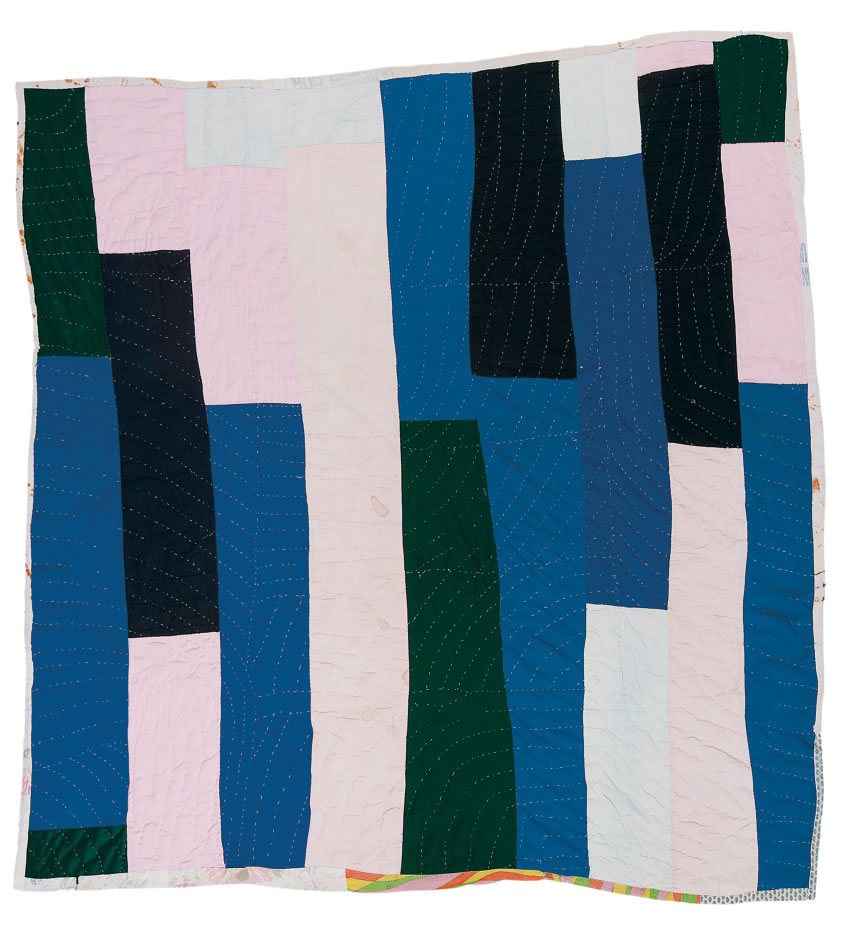It also seemed that Kalina's article about the quilters of Gee's Bend could almost serve as a perfect example of criticism of victim art. There was not a single negative thing posted, not about the work, not about the hanging of the show, not about anything. I also couldn't get a sense of what the quilts looked like from the black and white printout, so here are a couple of images:





Matt, are you saying that McEvilley did not take a position on the work in the MOMA or was that specifically based on the Quilting article? Reading McEvilley he makes several comments that point out the way the museum projects its own agenda on the body of work. Such as;
ReplyDelete"The very concept of "Affinity," rather than mere "similarity," attributes to the tribal craftsmen feelings like those of the modernist artists, for what else does the distinction between affinities and accidental similarities mean?"
By not declaring the anthropological information with the primitive work the museum is implying that the work was made with the same intentions. Any thoughts?
Okay, Once I finished the second article it is clear that the second article sounds like an emotional response. The "factual" information given seems weak. While some of McEvelley's statements might have stretched the truth he creates a better argument than Rubin.
ReplyDeleteGood - thanks, Andy and Matt - we will be talking about how McEvilley 'rads' MoMA to some extent...and whether or not a critic has a 'right' to 'read' an institution's intent in such a way.
ReplyDeleteKalina (God love him) clearly has something at stake in this. What do you think it could be???
Ummm . . . upon first glance, Kalina's work resembles those quilts.
ReplyDeleteAnd on second glance? Well, it still does...so what does that imply about how he cannot get along with McEveilley and suggests we must get over him?
ReplyDelete